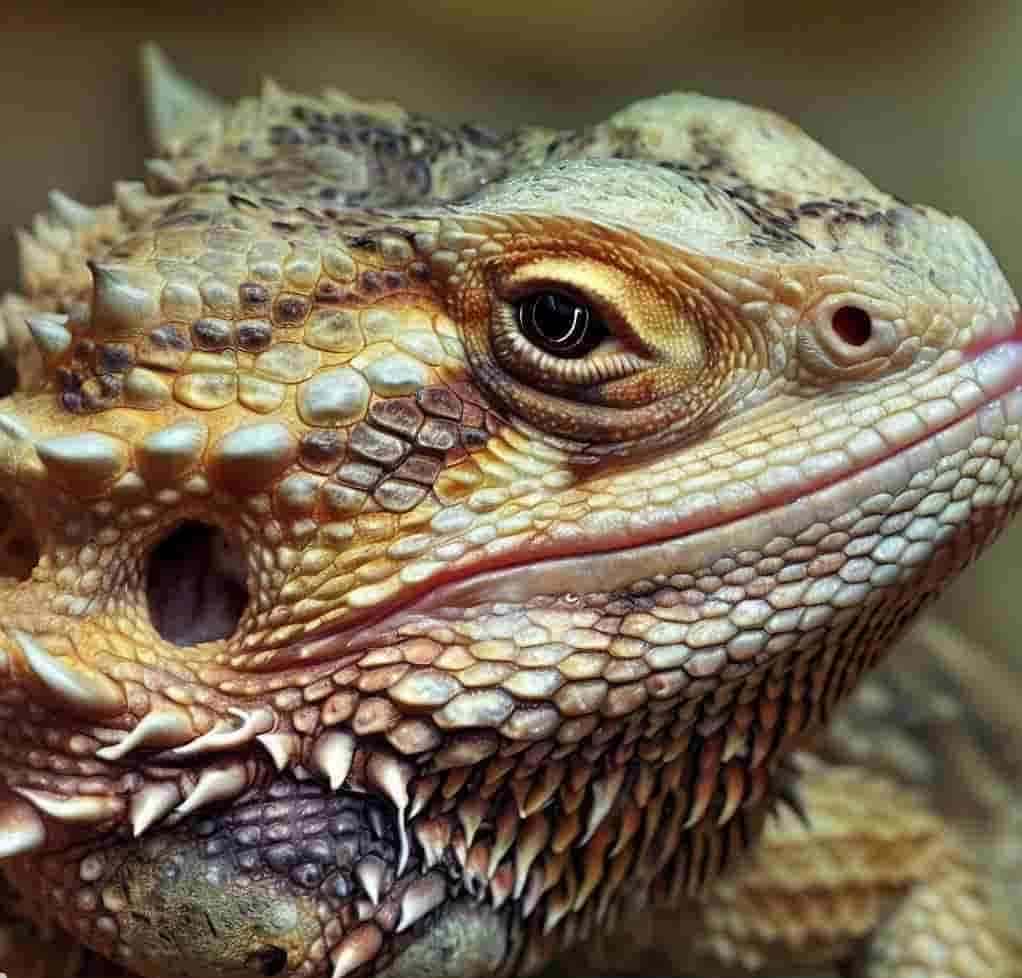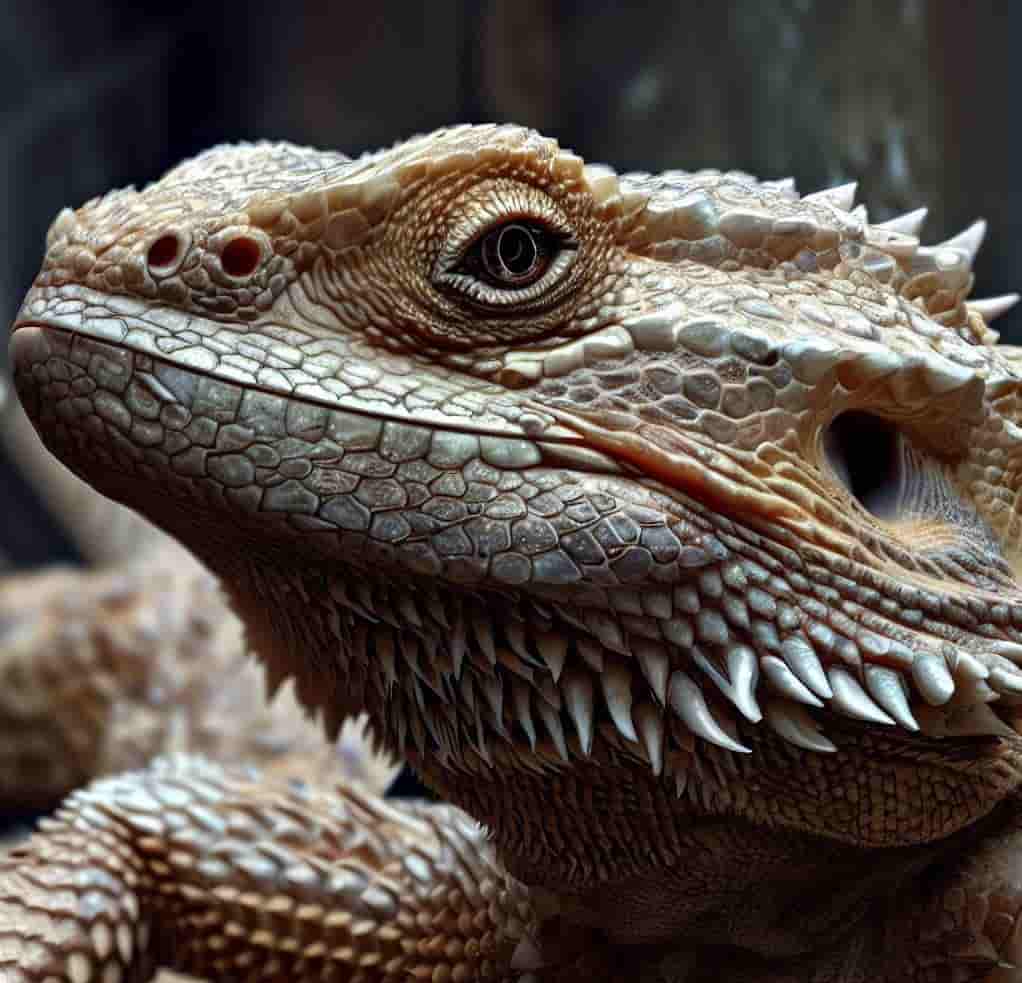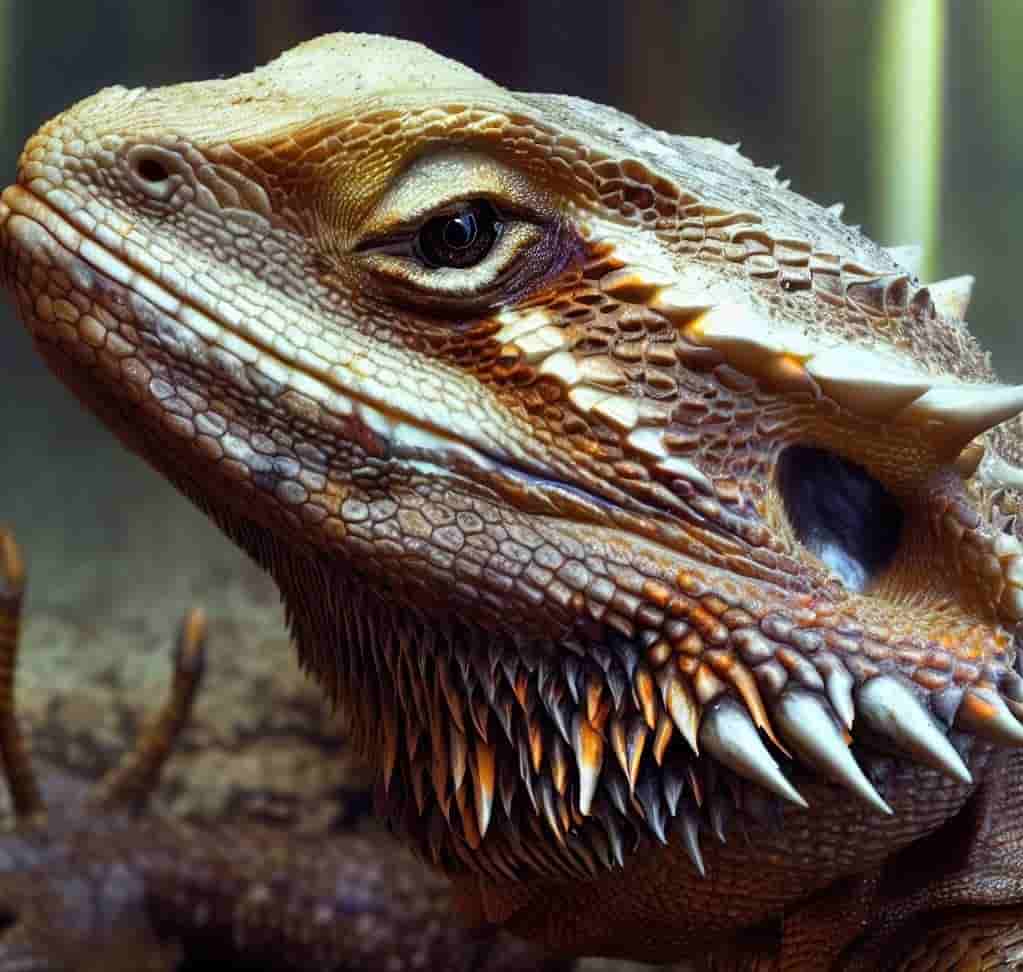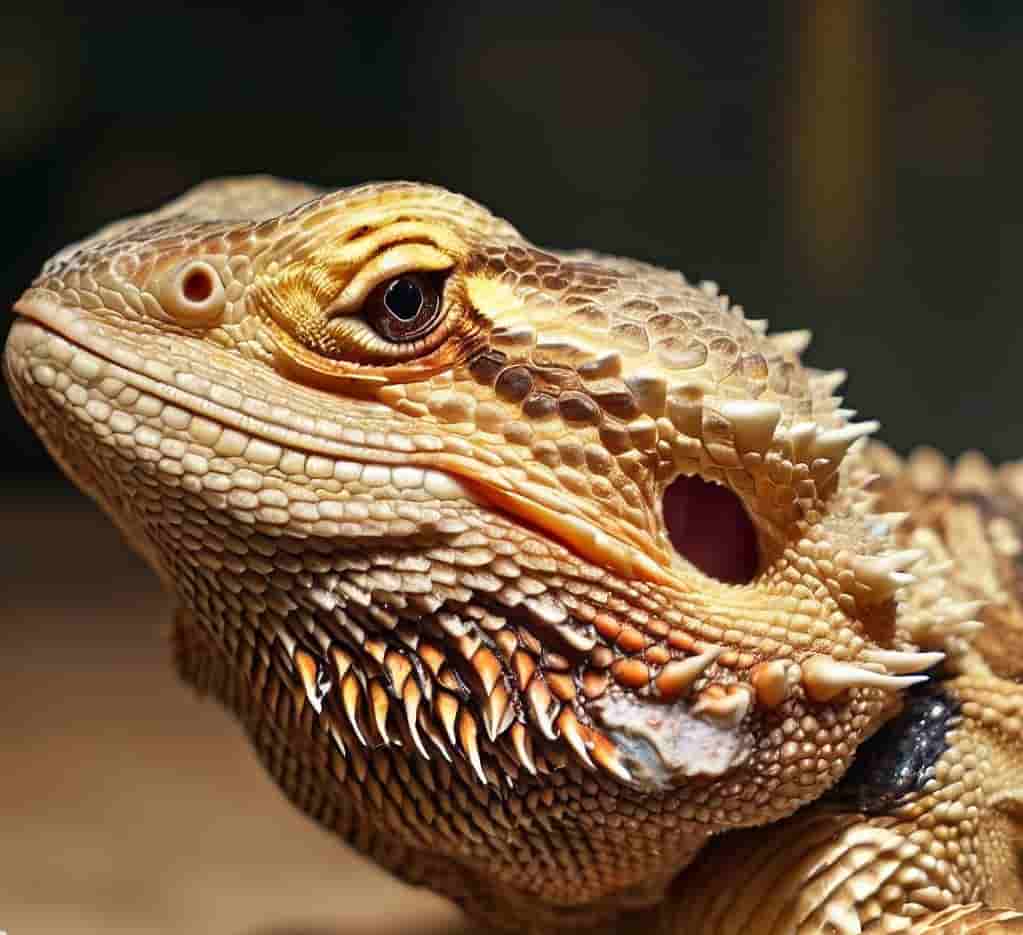Have you noticed redness or color changes in your bearded dragon’s skin? How about increased itchiness or irritation?
Just like us humans, beardies can experience skin issues that may cause discomfort and require our care and attention.
In this updated 2023 guide, we’ll explore various bearded dragon skin conditions, shedding light on common causes and effective care strategies.
So grab a cup of coffee and let’s dive in!
Table of Contents
Different Types of Skin Conditions

When it comes to bearded dragon skin conditions, a range of issues can arise, affecting their overall health and comfort.
This section will explore the different skin conditions commonly seen in bearded dragons. From infections to parasitic infestations, understanding these conditions is crucial for providing proper care and seeking timely treatment.
Bearded Dragon Skin Infections
Bearded dragon skin infections can be caused by fungal infections, bacterial agents, or parasites! Can you imagine that? These are posing potential discomfort for your scaly companion.
Understanding bearded dragon skin infections is essential for prompt intervention and effective treatment. Keep reading!
Fungal and Bacterial Infections
- Symptoms: Look out for white, powdery patches (fungal) or redness, swelling, and open wounds (bacterial) on your bearded dragon’s skin.
- Care Tips: It’s essential to seek veterinary advice for proper diagnosis and treatment. Your veterinarian may prescribe antifungal medications, recommend environmental modifications, and suggest topical therapies to alleviate the infection.
Bacterial Infections

- Symptoms: Look for redness, swelling, and open wounds on your bearded dragon’s skin, indicating a bacterial infection.
- Care Tips: Consult a veterinarian promptly for appropriate antibiotic treatment. Your vet may also recommend wound cleaning techniques and topical ointments to promote healing and prevent further complications.
Parasitic Infections (Mites, Ticks)
- Symptoms: Symptoms of parasitic infections in bearded dragons may include visible mites or ticks on the skin, itching, and irritation.
- Care Tips: It is crucial to seek a veterinary examination for accurate diagnosis and treatment. Depending on the severity, your vet may recommend parasite removal techniques and prescribe antiparasitic therapies to eradicate the infestation and relieve your bearded dragon’s discomfort.
Bearded Dragon Wrinkled Skin
Bearded dragon wrinkled skin is often a sign of dryness and dehydration. It can also be associated with shedding issues and retained skin.
Monitoring and addressing this condition is vital for maintaining the health and well-being of your bearded dragon. So, take a look at this.
Dry and Dehydrated Skin

- Symptoms: Keep an eye out for wrinkled and dry skin, sunken eyes, and sluggishness in your bearded dragon, which may indicate dehydration.
- Care Tips: Ensure your dragon has access to clean water at all times, encourage proper hydration, and provide regular baths to promote moisture. If the condition persists, seeking guidance from a veterinarian is advisable for further assessment and appropriate care.
Shedding Issues and Retained Skin
- Symptoms: Look for signs of prolonged shedding, difficulty in shedding, or retained skin on your bearded dragon.
- Care Tips: Maintain suitable humidity levels and temperature gradients in the enclosure, offer a moist hide to facilitate shedding, and assist your dragon if necessary. If you require assistance, consult a veterinarian for professional guidance on safe and proper handling during the shedding process.
Be sure to treat bearded dragon wrinkled skin and shedding issues to maintain their overall comfort and well-being.
Dermatitis and Skin Irritations
- Symptoms: Dermatitis and skin irritations can occur in bearded dragons, causing discomfort and potential complications. Common symptoms include redness, inflammation, itching, and skin lesions or sores.
- Care Tips: To address dermatitis and skin irritations, ensure a clean and hygienic enclosure free of irritants. Regularly clean and disinfect the enclosure, provide appropriate substrates, and avoid rough or abrasive materials.
Thermal Burns

- Symptoms: Thermal burns can be a severe concern for bearded dragons, especially when exposed to improper heat sources or scorching environments. Signs of thermal burns may include redness, blisters, peeling skin, or darkened areas on the skin.
- Care Tips: Prevention is key when it comes to thermal burns. Ensure appropriate temperature gradients in the enclosure and avoid direct contact with hot surfaces. If your bearded dragon does experience a burn, immediately remove them from the heat source and consult a veterinarian.
By recognizing and addressing dermatitis, skin irritations, and thermal burns promptly, you can safeguard the health and well-being of your beloved bearded dragon.
Symptom Management and General Care
Maintaining their well-being is essential to ensure they stay happy and healthy. This section explores some friendly tips and practices to keep your scaly friend in the best shape possible.
Bathing and Moisturizing
Treat your bearded dragon to some quality spa time! Gentle warm water baths provide hydration and help with shedding and keeping their skin clean.
Be sure to handle them carefully, as we want to avoid splish-splashing mishaps! After their refreshing bath, consider moisturizing their skin with reptile-safe lotions or oils to keep their scales looking lustrous and their skin feeling fabulous.
Environmental Optimization
Creating a comfortable habitat for your bearded dragon is essential. Ensure to provide suitable temperature gradients, cozy hiding spots, and a substrate that your scaly friend will find delightful.
Remember to set up the perfect lighting conditions, so they can bask like the sun-loving superstars they are. Keeping their environment clean and well-maintained will help them thrive and show off their radiant selves.
Veterinary Consultation
Regular check-ups with a knowledgeable professional will help catch potential issues early and keep your bearded dragon in tip-top shape. They can offer expert advice tailored to your scaly friend’s needs, ensuring they receive the best care possible.
Don’t hesitate to contact your reptile doc whenever you have questions or concerns—they support you and your dragon.
By embracing these friendly practices, you’ll give your bearded dragon the care they deserve. Remember, a little love and attention go a long way in keeping your scaly friend happy and healthy.
Causes and Prevention of Bearded Dragon Skin Conditions
Let’s take a closer look at the causes and prevention of skin conditions in these fascinating creatures.
Inadequate Humidity and Moisture Levels
While bearded dragons are adapted to arid environments, they need certain humidity levels, especially during shedding. Low moisture can lead to skin retention and dehydration.
Prevention Advice: Keep a hygrometer in the enclosure to monitor humidity, maintain it between 30% and 40%, and regularly mist your dragon’s habitat. Offering a humid hide—a covered area filled with damp, not wet, sphagnum moss—can be another effective way to provide a more humid microenvironment when your dragon needs it.
Nutritional Deficiencies or Imbalances
Nutritional imbalances can lead to skin conditions and other health problems. For instance, a deficiency in Vitamin A can cause severe skin problems.
Prevention Advice: A balanced diet of leafy greens, fruits, and insects, supplemented with necessary vitamins and minerals, can help prevent nutritional deficiencies. Consult a vet for proper dietary advice.
Incorrect Temperature Gradients or UVB Exposure
Improper enclosure temperatures can cause thermal burns, and insufficient UVB light may lead to metabolic bone disease, potentially causing skin problems.
Prevention Advice: For optimal health and skin conditions, adult bearded dragons should have a basking spot temperature of about 95-110°F (35-43°C) and a cooler end of about 75-85°F (24-29°C).
Regarding UVB exposure, bearded dragons should have access to UVB light for 12-14 hours daily.
Remember, understanding these causes and following the preventive measures can help maintain the skin health of your bearded dragon.
Conclusion
In a nutshell, caring for your bearded dragon’s skin is the key to their health and happiness. Keep their habitat clean, their temperatures regulated, and consult a reptile vet when needed. With a little TLC, you’ll have a scaly friend with skin as radiant as a desert sunrise.
So, embrace your inner bearded dragon dermatologist and ensure their skin stays flawless. Together, we’ll keep those scales shining bright and beautiful. Stay scaly, and keep rocking the reptile kingdom!
FAQs
How can I prevent skin infections in my bearded dragon?
Maintain a clean and hygienic enclosure, provide proper temperature and humidity levels, and seek veterinary care for regular check-ups and early detection of any skin issues.
Are there any home remedies for treating minor skin conditions in bearded dragons?
It’s recommended to consult a reptile veterinarian for appropriate treatment options. Home remedies can be risky and worsen the condition if not used correctly.
What should I do if my bearded dragon is experiencing difficulty shedding?
Provide a moist hide or offer gentle misting to increase humidity. If shedding problems persist, consult a veterinarian for guidance and potential assistance in the shedding process.
Alina Hartley is a small-town girl with a ginormous love of bearded dragons. It all started with Winchester, a baby bearded who was abandoned at the shelter by his former owners because of a birth defect that caused one front leg to be shorter than the other. Alina originally went to the shelter looking for a guinea pig, but one look at Winchester and it was love at first sight. From that day on, Alina has dedicated her life to learning everything she can about bearded dragons. She loves helping new beardie parents start their incredible journey with these magnificent reptiles.
Follow her on:
LINKEDIN
TWITTER.
Read her latest articles HERE
Learn more about her HERE.

